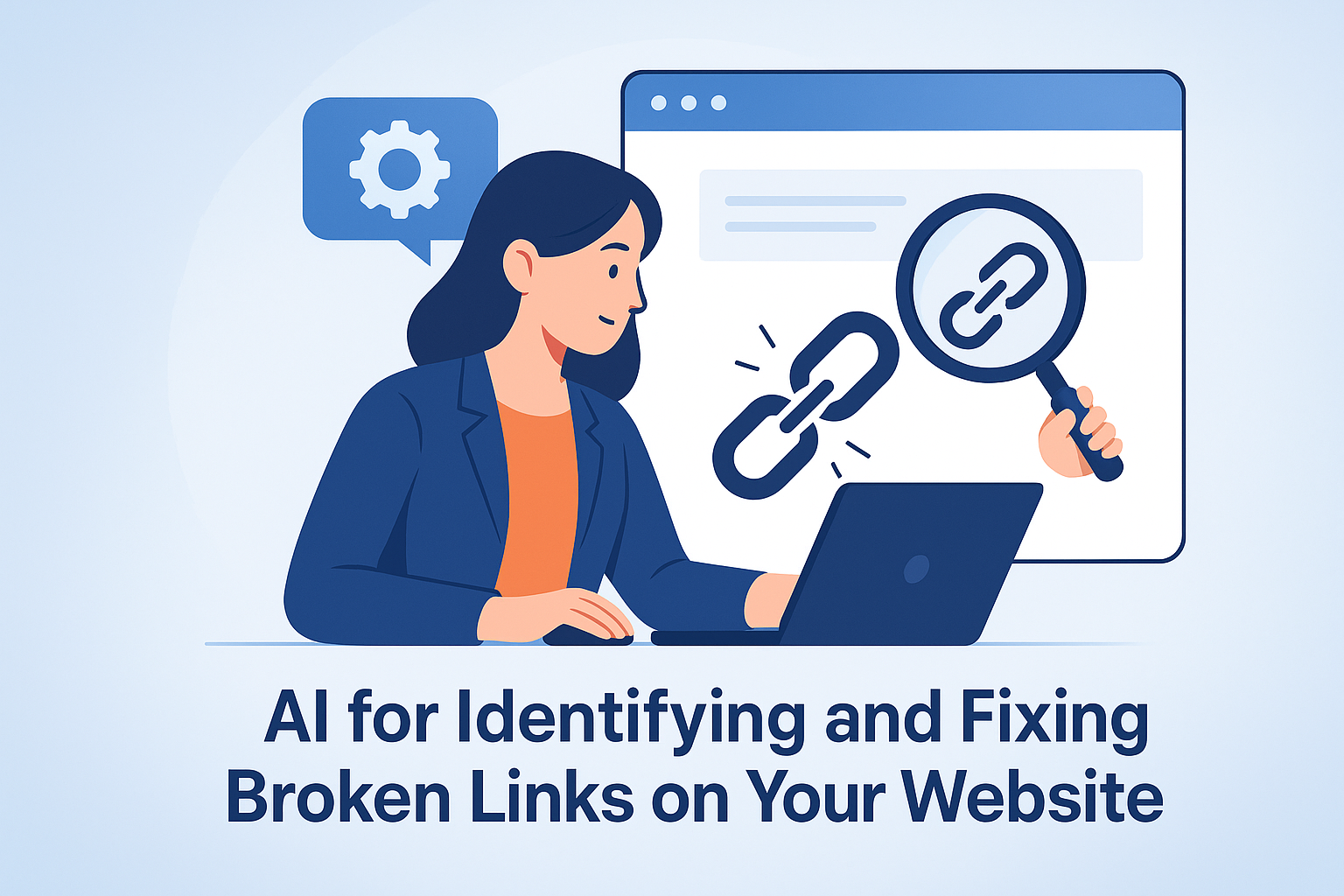In today’s search landscape, creating content that ranks isn’t enough—it also needs to resonate with readers, keep them engaged, and deliver a frictionless experience.
That’s why content readability and user experience (UX) are now key factors in how your pages perform in both search engines and real-world engagement.
Poor readability leads to:
- High bounce rates
- Low time-on-page
- Lower conversion rates
- Missed opportunities for featured snippets or voice search
Fortunately, with AI-powered tools like DIYSEO, you can analyze, rewrite, and format your content to dramatically improve readability and UX—automatically and at scale.
This guide will show you how to use:
- DIYSEO GPT to audit content readability and structure
- SEO AI Writer to rewrite and reformat for clarity and engagement
- Link Marketplace to drive traffic to high-performing, reader-friendly content
Why Readability and UX Matter for SEO
Google’s algorithm has evolved to prioritize helpful content that delivers value quickly and clearly.
If your content is difficult to read, poorly structured, or visually overwhelming, it signals:
- Weak user experience
- Unclear intent alignment
- Low perceived trustworthiness
This affects:
| Metric | SEO Impact |
|---|---|
| Dwell Time | Longer dwell time = positive ranking signal |
| Bounce Rate | High bounce = poor experience signal |
| Scroll Depth | Indicates engagement and content quality |
| Mobile Behavior | Impacts Core Web Vitals and mobile-first indexing |
Improving readability boosts all of these metrics—and AI makes it easy to do consistently.
Step-by-Step: How AI Improves Readability and UX
✅ Step 1: Diagnose Readability Issues with DIYSEO GPT
Start by running the Layout & Readability Review prompt in DIYSEO GPT. This will evaluate:
- Paragraph length
- Heading hierarchy and spacing
- Mobile UX friction
- Clarity and structure of key content sections
- Overuse of jargon or passive language
Ask in Chat History:
“Which pages have readability issues that could be causing bounce or poor engagement?”
You’ll receive a prioritized list of pages to update—starting with those that can move the needle fastest.
✅ Step 2: Use SEO AI Writer to Rewrite for Readability
Once you’ve identified weak content, open the SEO AI Writer to begin rewriting.
Prompt Examples:
Shorten and Simplify:
“Rewrite this paragraph in plain English. Keep it under 60 words and remove technical jargon.”
Format for Mobile:
“Break this section into 3 smaller paragraphs with a bullet list for mobile readability.”
Add Headings and Subheadings:
“Organize this long section into an H2 and three H3s with keyword-relevant headings.”
Enhance Engagement:
“Rephrase this block to lead with a question or hook that keeps users reading.”
This ensures your content is:
- Easier to scan
- More engaging for both desktop and mobile users
- Structured to satisfy both human and algorithmic expectations
✅ Step 3: Structure Content for UX and Visual Clarity
Ask SEO AI Writer to:
- Generate “In this article” outlines with anchor links
- Insert FAQ blocks at the end of posts
- Add summary sections at the top or bottom
- Rewrite intros with strong hooks and intent alignment
Prompt:
“Create a 4-point summary of this article with bolded key takeaways. Place it under the intro paragraph.”
These formatting elements improve flow, focus attention, and increase time-on-page.
✅ Step 4: Optimize Internal Links for User Flow
Use DIYSEO GPT’s Page-to-Page Link Suggestions prompt to identify:
- Pages that should link to the content you’ve just updated
- Related articles you can link from the updated content
- Anchors that keep users flowing naturally through your site
Then use SEO AI Writer to implement links with clarity.
Prompt:
“Insert an internal link to /ai-seo-strategy with anchor text ‘comprehensive AI SEO guide’ in this paragraph.”
Improved internal navigation enhances user journey—and reinforces sitewide authority.
✅ Step 5: Tailor UX for Mobile Engagement
Run the Mobile Performance prompt in DIYSEO GPT to analyze layout issues on small screens.
Common UX blockers:
- Walls of text
- Buried CTAs
- Small tap targets
- Missing visual anchors or formatting
Use SEO AI Writer to rewrite content blocks with:
- Shorter paragraphs
- Tap-friendly CTAs
- In-line bullet points
- Contextual transitions that prevent drop-off
Prompt:
“Rewrite this CTA to be concise, mobile-optimized, and visible above the fold.”
Best Practices for Readable, User-Friendly Content
| Element | UX Benefit |
|---|---|
| Short paragraphs (1–3 lines) | Easier to scan on mobile |
| Bullet points & lists | Highlights key takeaways |
| Descriptive subheadings | Improves navigation |
| FAQs & summaries | Boosts dwell time and snippet potential |
| Conversational tone | Builds trust and clarity |
| Internal links early in content | Keeps users engaged and lowers bounce |
You can prompt the SEO AI Writer to apply each of these across your entire content archive.
Promote High-Readability Content via Link Marketplace
Once your content is clean, readable, and user-friendly, it’s ready to be shared—and to earn trust.
Use the Link Marketplace to:
- Build backlinks to your most engaging content
- Target publishers with relevant, mobile-first audiences
- Amplify well-structured articles that serve as topic hubs
Example:
You rewrite a blog post titled “AI Tools for SEO in 2024,” making it more readable and adding internal links to related guides.
Next:
- Go to Link Marketplace
- Filter by marketing or AI niche
- Choose placements with strong UX (clean layouts, long-form content)
- Build links to drive quality traffic and reinforce your improvements
This supports better engagement and stronger authority signals.
DIYSEO Readability & UX Optimization Workflow
| Step | Tool | Task |
|---|---|---|
| Find low-readability pages | DIYSEO GPT – Layout & Readability Review | Identify friction points |
| Rewrite for clarity | SEO AI Writer | Simplify, structure, and format |
| Fix mobile issues | DIYSEO GPT – Mobile Performance | Optimize for on-the-go users |
| Add navigation and internal links | SEO AI Writer + Page-to-Page Suggestions | Guide user flow and boost session depth |
| Promote via backlinks | Link Marketplace | Send traffic to your best content |
Real-World Example: From Boring to Breakthrough
Problem: A 2,000-word blog post had solid rankings but terrible engagement—bounce rate over 80% and time-on-page under 60 seconds.
DIYSEO Fix:
- Ran Layout & Readability Review → Flagged dense blocks and missing headings
- Used SEO AI Writer to:
- Reformat into 5 main H2 sections
- Add 3 lists and 2 callouts
- Rewrite intro with a question + benefit
- Added 4 internal links via Page-to-Page Suggestions
- Promoted post via Link Marketplace
Results:
- Time-on-page increased by 91 seconds
- Bounce rate dropped by 34%
- Post appeared in People Also Ask box within 2 weeks
- Shared 48 times on social media organically
Final Thoughts
If your content is hard to read or painful to navigate, your SEO will suffer—no matter how good your keywords are.
With DIYSEO, you can:
- Analyze readability and structure using GPT-driven prompts
- Rewrite and format for users and search engines using the SEO AI Writer
- Drive traffic to optimized content using the Link Marketplace
Helpful content isn’t just informative—it’s engaging, easy to consume, and built for real users. AI makes it effortless.
Frequently Asked Questions
1. How does AI improve the readability of online content?
Artificial intelligence significantly enhances the readability of content by analyzing and adjusting text to meet reader preferences and comprehension levels. AI tools can assess a variety of readability factors, such as sentence structure, complexity, and length, and quickly rewrite content for optimal clarity. These AI systems can suggest simpler alternatives for complex words and break down long paragraphs to make the text more engaging and digestible. Moreover, AI can be utilized to tailor content to the user’s reading abilities, thereby ensuring that it remains accessible to a broader audience, from children to non-native speakers. By leveraging machine learning algorithms, AI-driven tools provide real-time feedback on readability scores and offer recommendations for improvement, ensuring that content consistently hits the readability sweet spot. This intelligent technology allows content creators to craft more engaging and accessible material, leading to better user retention and conversion rates.
2. What role does AI play in personalizing user experiences?
AI plays an instrumental role in personalizing user experiences by analyzing user behavior, preferences, and historical data to offer tailored content recommendations. Through deep learning algorithms, AI systems can predict user interests and suggest content that aligns with individual habits and preferences, enhancing user engagement. For instance, AI can track what articles a user reads, time spent on each page, and even the interaction with multimedia elements to fine-tune future content suggestions. This personalization extends beyond content; AI can adjust the interface and presentation to align with user preferences, such as offering dark mode for long reading sessions or optimizing layout for different devices, ensuring optimal viewing experiences. By providing a more personalized experience, AI not only improves how content is consumed but also builds a stronger connection with users, increasing loyalty and dwell time on a platform.
3. In what ways can AI optimize content layout for better user experience?
AI optimizes content layout by analyzing usage patterns and determining the best configurations for delivering information. This includes identifying the most effective placement of images, videos, and infographics to complement the text and resizing them according to the user’s device for the best viewing experience. AI can even predict which layout would work best for maximizing engagement, such as the ideal distribution of headings, bullet points, and other structural elements that enhance readability. Furthermore, AI can dynamically alter layouts in response to user interactions, ensuring that the content remains intuitive and aesthetically pleasing. For instance, AI-driven systems can offer an immersive virtual reality or augmented reality experience where applicable, transforming static content into interactive experiences that captivate users. By continuously learning and adapting, AI ensures that content is always presented in the most engaging manner, significantly improving user experience and satisfaction.
4. Can AI assist in identifying user sentiment toward specific content?
Yes, AI can effectively assist in identifying user sentiment toward specific content through sophisticated natural language processing (NLP) algorithms. AI tools can analyze user-generated data such as comments, reviews, or social media interactions to gauge sentiment—whether positive, negative, or neutral. These insights provide content creators with invaluable feedback on how their content is perceived, enabling them to make informed decisions about future material. By understanding sentiment trends, AI can recommend adjustments to tone, style, or topic to better align with audience expectations and preferences. Additionally, sentiment analysis can help identify emerging topics of interest, allowing creators to produce timely and relevant content that resonates with their audience. This level of feedback is crucial for maintaining a strong connection with readers and continually enhancing the user experience.
5. How does AI-driven content generation work? Can it genuinely engage users?
AI-driven content generation works by utilizing algorithms and data from various sources to automatically create content that meets specific parameters. Through techniques such as machine learning and deep learning, AI systems analyze vast amounts of data to understand language patterns, topic relevance, and audience preferences. This leads to the generation of coherent, contextually appropriate, and engaging content. While there is still a need for human oversight to maintain creativity and emotional appeal, AI-generated content can effectively engage users, especially for data-driven or factual pieces. These systems are capable of personalizing content to suit different reader segments, whether it’s through varying tone or format. For example, AI can produce diverse content genres, from news articles tailored to specific user interests to personalized marketing material that captures individual attention. The combination of AI’s efficiency and data-driven insights ensures that generated content remains fresh, relevant, and highly connected to its audience, driving deeper engagement and satisfaction.



